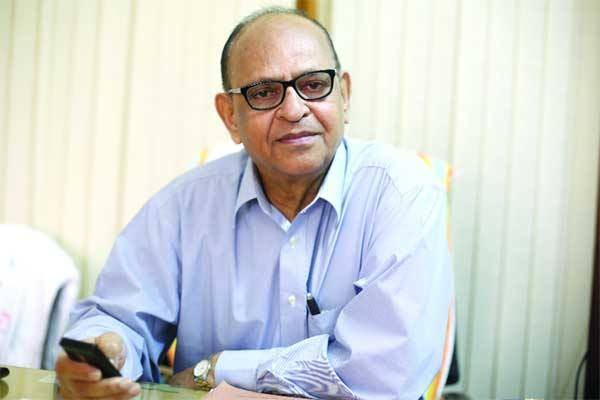A profile of a burns specialist: Dr Sen
Ansar Ahmed Ullah
Contributing Editor, Shottobani
London: He began dreaming of establishing an independent burn institute in the 1980s. I endured ridicule, neglect and humiliation to explain why this institute needed to be done. I also had to hear, ‘You’re in a mess.’ He will take the money and build a house in Kolkata’s Lake Circus. “He didn’t back down on any of that. Three decades later, the Dream Burn Institute was established and the person behind it was Dr Samanta Lal Sen.
But for Dr Samanta Lal Sen, it was not all plain sailing. He had gone to the Department of Economic Relations for office work. Someone threw the file in front of him and said, ‘There is no need for a burn institute in Bangladesh.’ ’Not only that, when the place for today’s burn institute was fixed next to Dhaka Medical College Hospital, there was a protest march against Dr Samanta Lal. He was threatened. He said my wife Ratna Sen had supported me in times of depression. My father, Shri Jitendra Lal Sen, used to say, ‘Look, when you go to work, many people will talk a lot. You can’t walk away. You have to stick to your goals.’
 Dr Samanta’s work began in 1975 when he was transferred from his home district Habiganj to Shaheed Suhrawardy Hospital. At that time, at the invitation of Bangabandhu Sheikh Mujibur Rahman, US Surgeon Dr Ronald Joseph Cast came to the hospital to treat the disabled freedom fighters. With only five beds, treatment for burns and plastic surgery began there.
Dr Samanta’s work began in 1975 when he was transferred from his home district Habiganj to Shaheed Suhrawardy Hospital. At that time, at the invitation of Bangabandhu Sheikh Mujibur Rahman, US Surgeon Dr Ronald Joseph Cast came to the hospital to treat the disabled freedom fighters. With only five beds, treatment for burns and plastic surgery began there.
He was transferred to Dhaka Medical College Hospital in 1980. Samanta Lal Sen. “I was surprised that the burn patients were left on the balcony, on the floor, behind the bathroom.” No one would go near them in the stench. They didn’t get any treatment.’ Burn patients were then allowed to use something like an ointment,” says Samanta Lal. Their relatives were crying. No one had sympathy for these patients at the time. Even doctors and nurses were less interested.
Dr Samanta Lal Sen passed MBBS from Chittagong Medical College. Dr Sen said the sight pained him a lot as a plastic surgeon. The burn patient is essential to the plastic surgeon’s medical care. Since then, he has been pushing to establish an independent burn institute. So that the suffering of these patients can be alleviated and the treatment system can be improved.
In 1986, Dr Samanta Lal and his teacher Professor Mohammad Shahidullah appealed to the government to establish a separate burn unit in Dhaka Medical College Hospital. In 2003, a 50-bed burn and plastic surgery unit was started at Dhaka Medical College Hospital under the leadership of Dr Samanta Lal Sen. The number of beds has now increased to 300. In 2016, Prime Minister Sheikh Hasina laid the foundation of the ‘Sheikh Hasina National Institute of Burn and Plastic Surgery’. Two years later, the 500-bed institute opened. The coordinator of the organisation is Dr Samanta Lal Sen.
 This institute is the largest institution not only in Bangladesh but all over the world for the treatment of burn patients. Dr Samanta Lal Sen said, “Prime Minister Sheikh Hasina once said that something has to be done so that the people of Bangladesh do not have to go to Singapore. The people of Singapore should come to Bangladesh for treatment. That’s what today’s organisation is for.”
This institute is the largest institution not only in Bangladesh but all over the world for the treatment of burn patients. Dr Samanta Lal Sen said, “Prime Minister Sheikh Hasina once said that something has to be done so that the people of Bangladesh do not have to go to Singapore. The people of Singapore should come to Bangladesh for treatment. That’s what today’s organisation is for.”
This institute provides the latest treatment in the world. The patient is never asked to be sent elsewhere. In addition to the burn patient, the treatment of the severed hand is also done here. The institute can provide this treatment if someone’s hand is cut off and taken away within six hours. Due to lack of publicity, many people do not know that cancer treatment is also given here.
The doctor’s only prayer now is to see the activities of burn institutes set up in Sylhet, Chittagong, Barisal, Khulna and Rajshahi before he dies.

